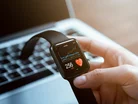Maximising patient safety with IoT in healthcare

Patient monitoring is of the utmost importance in healthcare. That’s why nurses and other personnel perform manual checks on a daily basis in many departments of a hospital or other healthcare facility. The Internet of Things is an excellent match for alleviating some of the manual labor in healthcare, in addition, IoT enhances patient comfort.
IoT sensor technology and healthcare
Patients may have a more delightful experience, minimized stress, and recover faster with technologies such as smart thermostats, smart beds, and adjustable lighting settings.
IoT also provides remote health monitoring and emergency alerting systems using wearable technology, such as electronic wristbands, enhanced hearing aids, wearable heart monitors, environmental sensors and so on. These sensor-based devices enable physicians to more precisely monitor their patients and, as a result, provide better-informed therapies.
Another critical advantage of sensor-based IoT devices in hospitals is improved patient and staff safety by monitoring temperature-sensitive goods and optimising cleaning efforts. Temperature sensors and cold storage automation assure the safe storage of food, blood, and drugs, while water sensors prevent possible leaks and risks, occupancy sensors monitor waiting rooms to manage capacity, and disinfection systems maintain places hygienic.
National Health Service (NHS) and cold storage monitoring
The UK's National Health Service (NHS) has enhanced patient safety and cut costs by using sensors to automate daily hospital chores such as drug temperature checks, fire door monitoring, patient comfort temperatures, and much more.
The sensing system, which is now implemented at 120 National Health Service facilities across several Trusts, is focused on cold storage monitoring, with sensors put in pharmacy refrigerators and freezers. It automates regular hospital chores such as drug temperature checks, fire door monitoring, patient comfort temperatures, and much more.
This has resulted in a speedy ROI for the NHS of less than three months and considerable improvements to patient care. The sensor system not only secures vaccine and drug inventory, but saves 10,000 hours of nurse time in a year. Now, the NHS staff takes immediate action thanks to real-time alerts and can manage their sites remotely.
Byline written by Pippa Boothman, VP Marketing & Communications at Disruptive Technologies, a Norwegian developer of the world’s smallest wireless sensors and an award-winning innovator in the IoT market.



